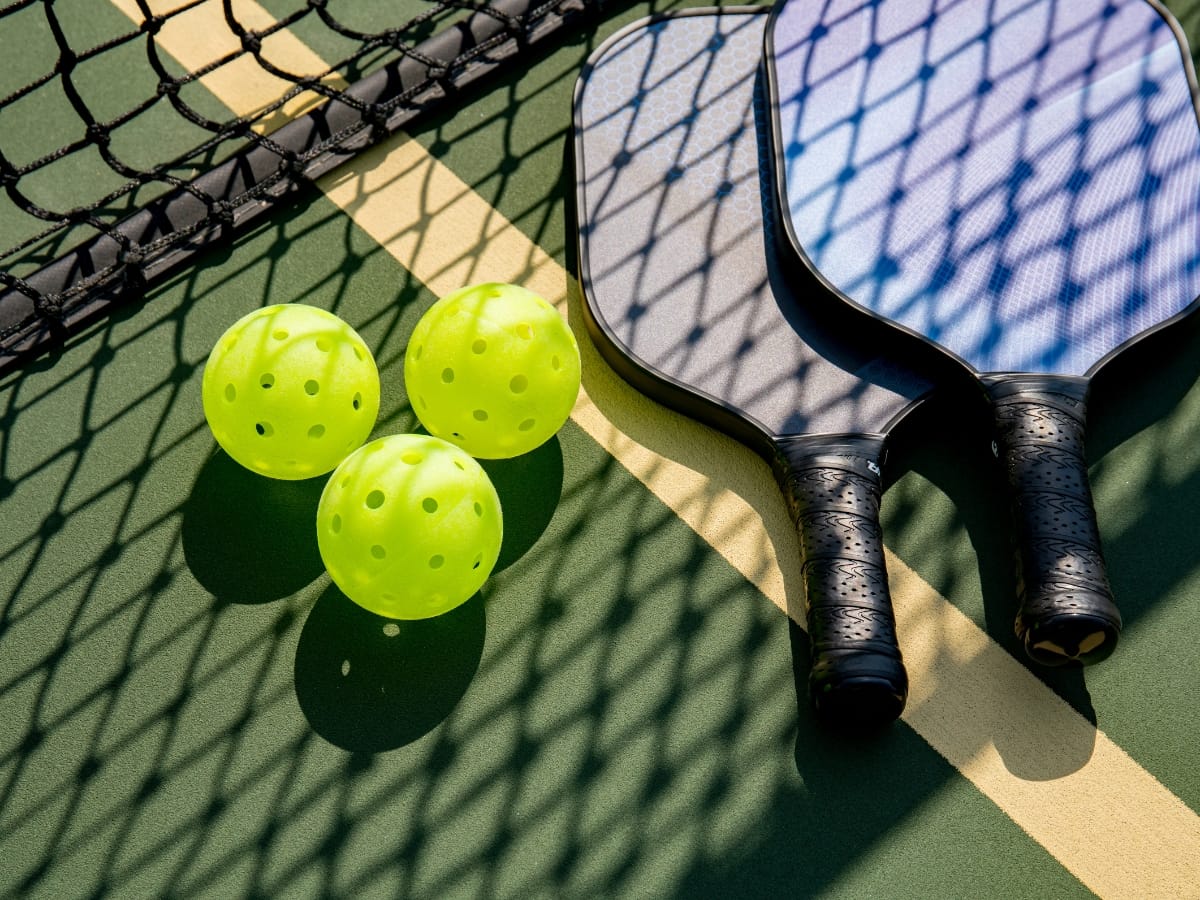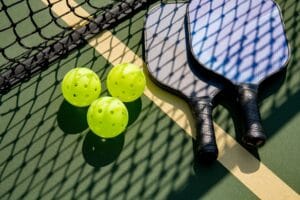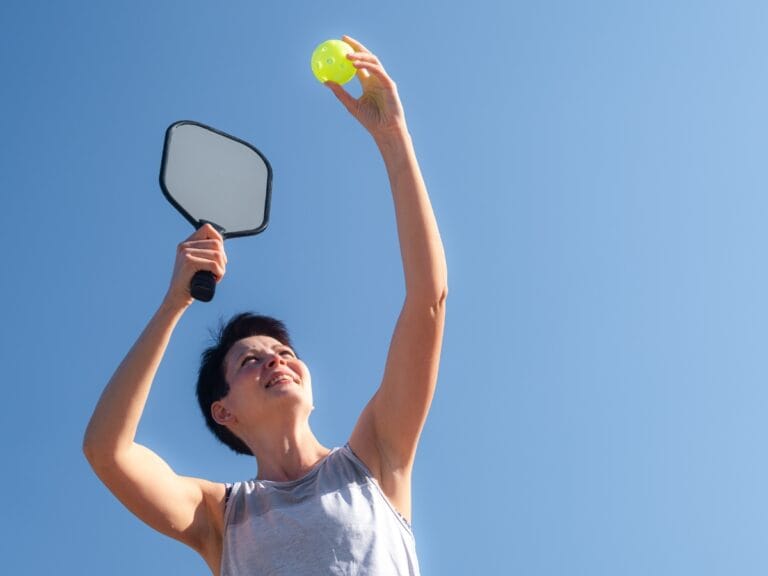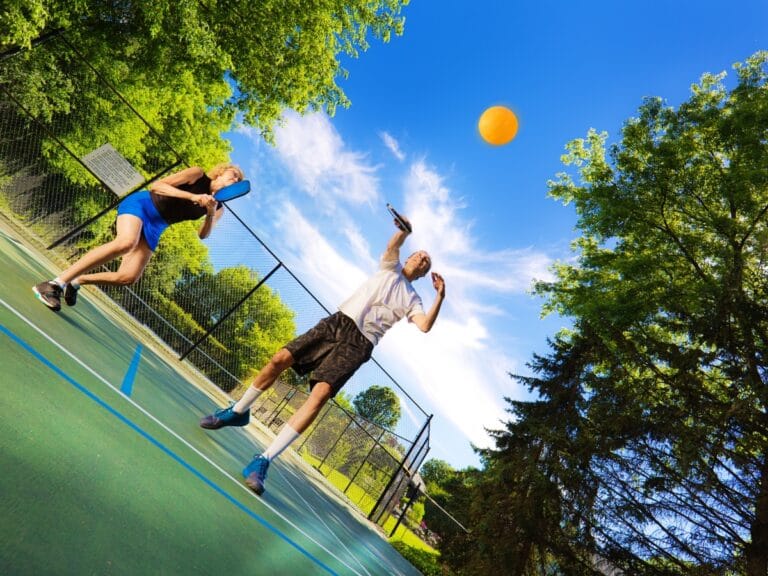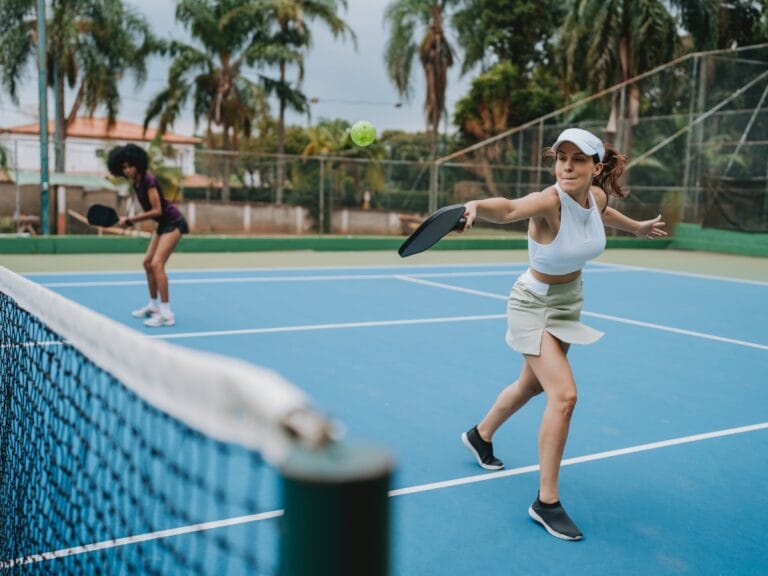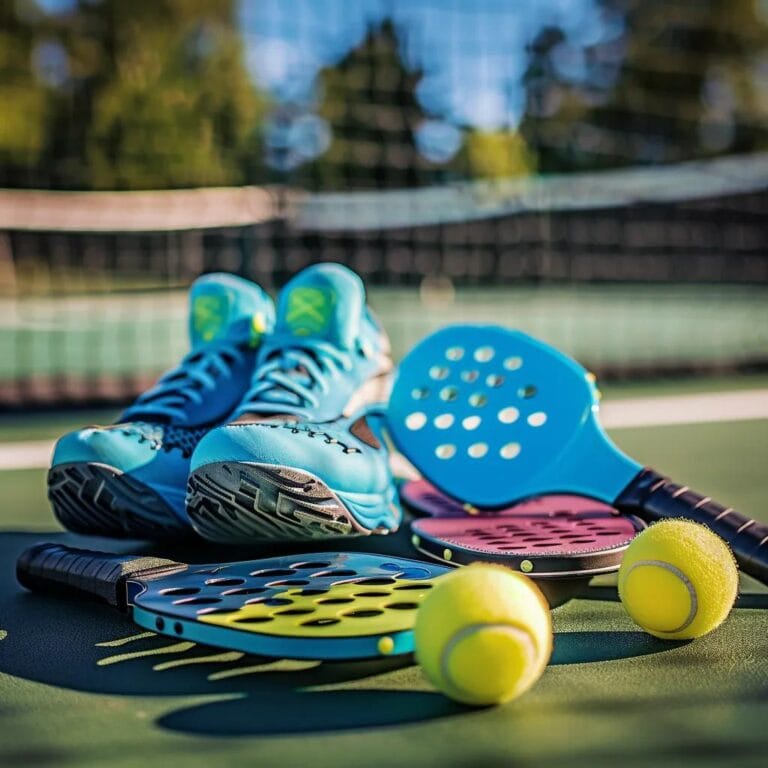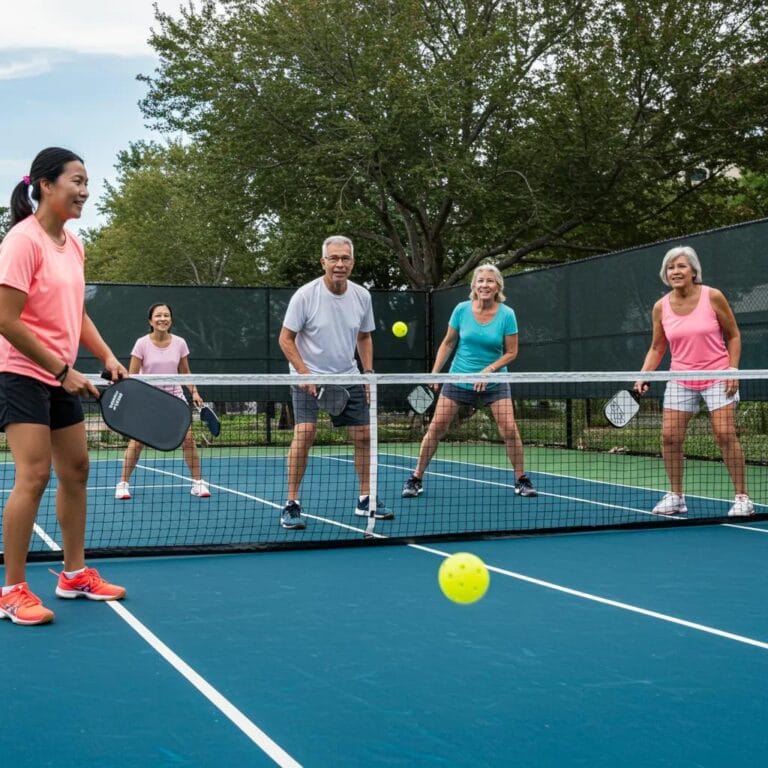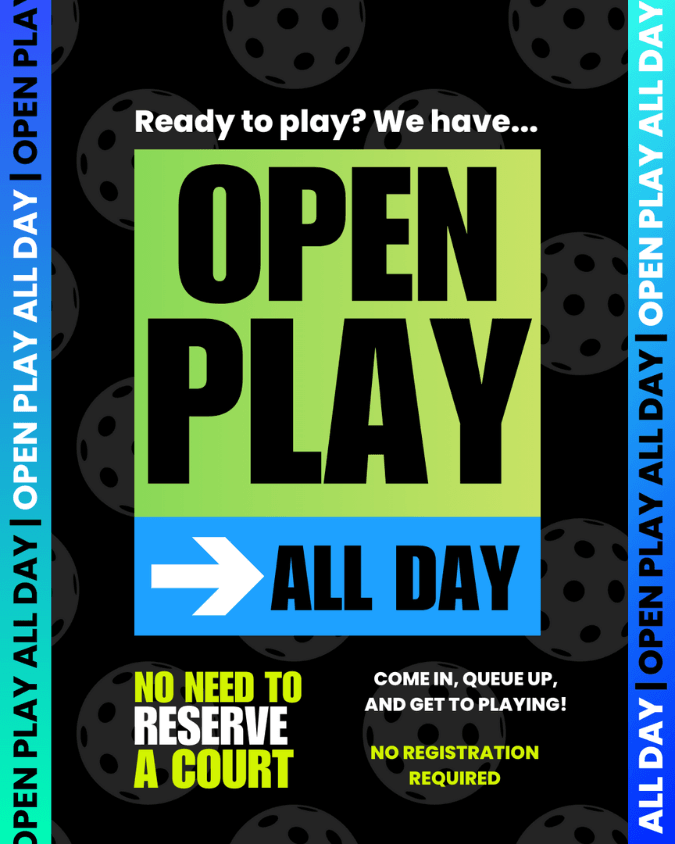Pickleball—the fast-growing sport combining elements of tennis, badminton, and ping-pong—is easy to learn but offers endless opportunities to sharpen your skills and strategy. Whether you’re looking for a fun way to stay active or want to join your local pickleball community, mastering the basics is the first step to enjoying this addictive game. In this beginner’s guide, we’ll break down everything you need to know about how to play pickleball: rules, scoring, essential equipment, and fundamental techniques to get you confidently on the court and rallying in no time.
How to Play Pickleball: Everything Beginners Must Know
What Are the Essential Pickleball Rules Every Beginner Should Know?
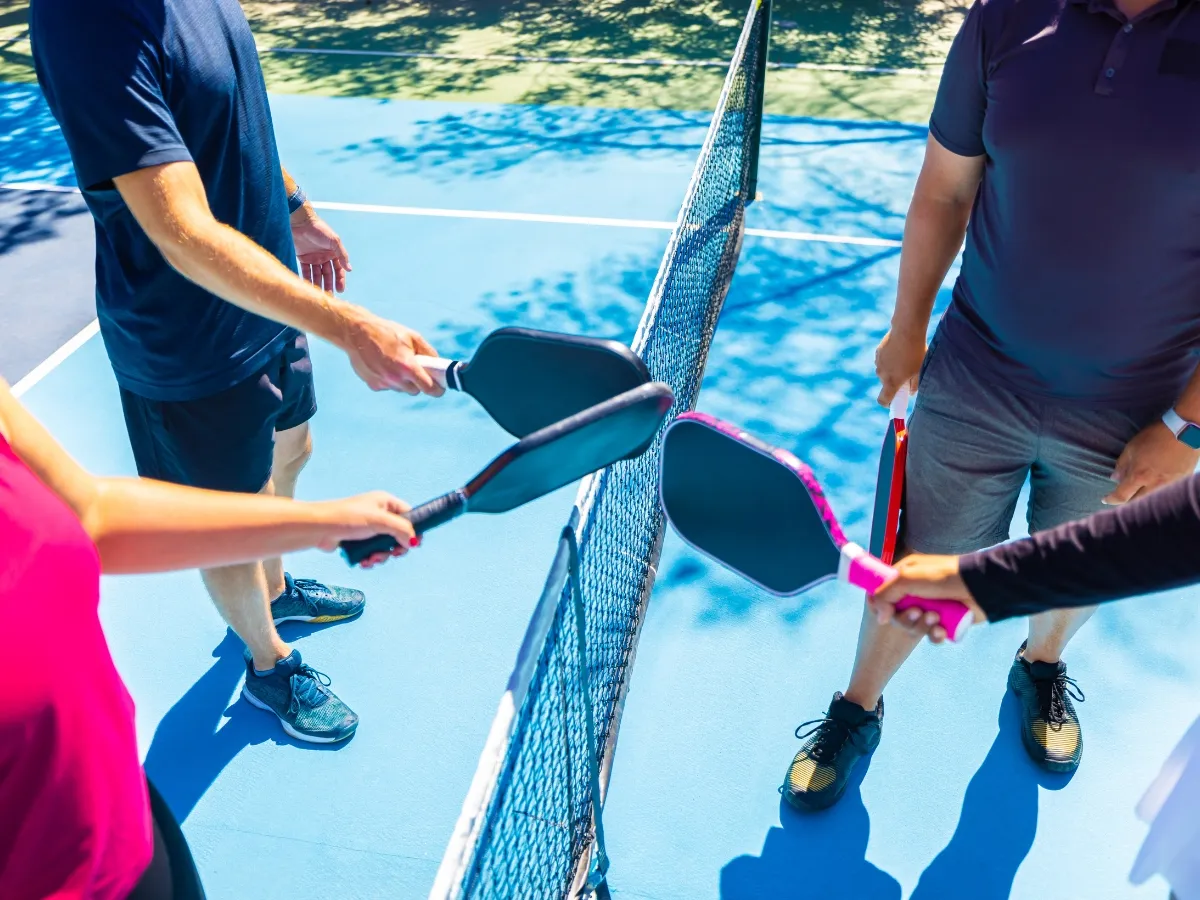
Pickleball feels friendly and fast, but it runs on clear rules that keep the play fair. New players should understand how to serve, when the ball must bounce, what the non-volley zone allows, how faults are called, and who makes line calls. Mastering these basics builds good habits and makes games smoother, whether you are on an outdoor court or playing indoors.
How Do You Perform a Legal Pickleball Serve?
A legal serve is underhand and struck below the waist with an upward motion. Start behind the baseline with both feet set, contact the ball cleanly, and send it diagonally into the opposite service court beyond the non-volley line. Keep your feet behind the baseline until contact to avoid a foot fault. If the ball clips the net and still lands in the correct service box, follow the local rules for lets; many rec groups now play the ball rather than replay the serve. Consistent serving form helps rallies start cleanly and reduces disputes.
What Is the Two-Bounce Rule and Why Is It Important?
After the serve, the receiver must let the ball bounce once before returning it. Then the serving team must also let the next shot bounce once before anyone can volley. These first two bounces slow the point just enough to encourage longer rallies and smarter shot selection. It also prevents a server from rushing the net to end points immediately, which keeps games balanced for players of different ages and skill levels.
What Are the Rules of the Non-Volley Zone or “Kitchen”?
The non-volley zone is the 7-foot area on each side of the net. You may step into this zone to hit a ball that has bounced, but you cannot volley from inside it. During a volley, any contact with the zone is a fault, including toes on the line or momentum that carries you forward after contact. That includes anything you wear or hold. Learn to stop before the line, or step back after a dink that lands in the kitchen to avoid an easy fault.
How Are Faults and Penalties Called in Pickleball?
A rally ends in a fault when a rule is broken. Common examples include hitting out of bounds, volleying from the kitchen, double-bouncing the ball on one side, or serving to the wrong box. Call faults promptly and clearly so both teams know the score and server rotation can continue without confusion. If you are unsure, favor your opponent. That simple habit keeps games friendly and moving.
How Do You Make Accurate Line Calls During Play?
The player or team on the side where the ball lands makes the call. A ball is in if any part touches the line. Announce out calls loudly and immediately, and be willing to reverse a call if your partner has a better view. When doubt remains, call the ball in. Players who communicate before points about who will watch which lines avoid many arguments and keep attention on the next shot, not the last one.
Learn these basics, and you will spend less time debating and more time playing. As your consistency grows, you can add tactics like third-shot drops, stacked formations, and smarter court positioning to raise your level without losing sight of the fundamentals that make pickleball fun.
How to Keep Score in Pickleball: A Beginner’s Scoring Guide
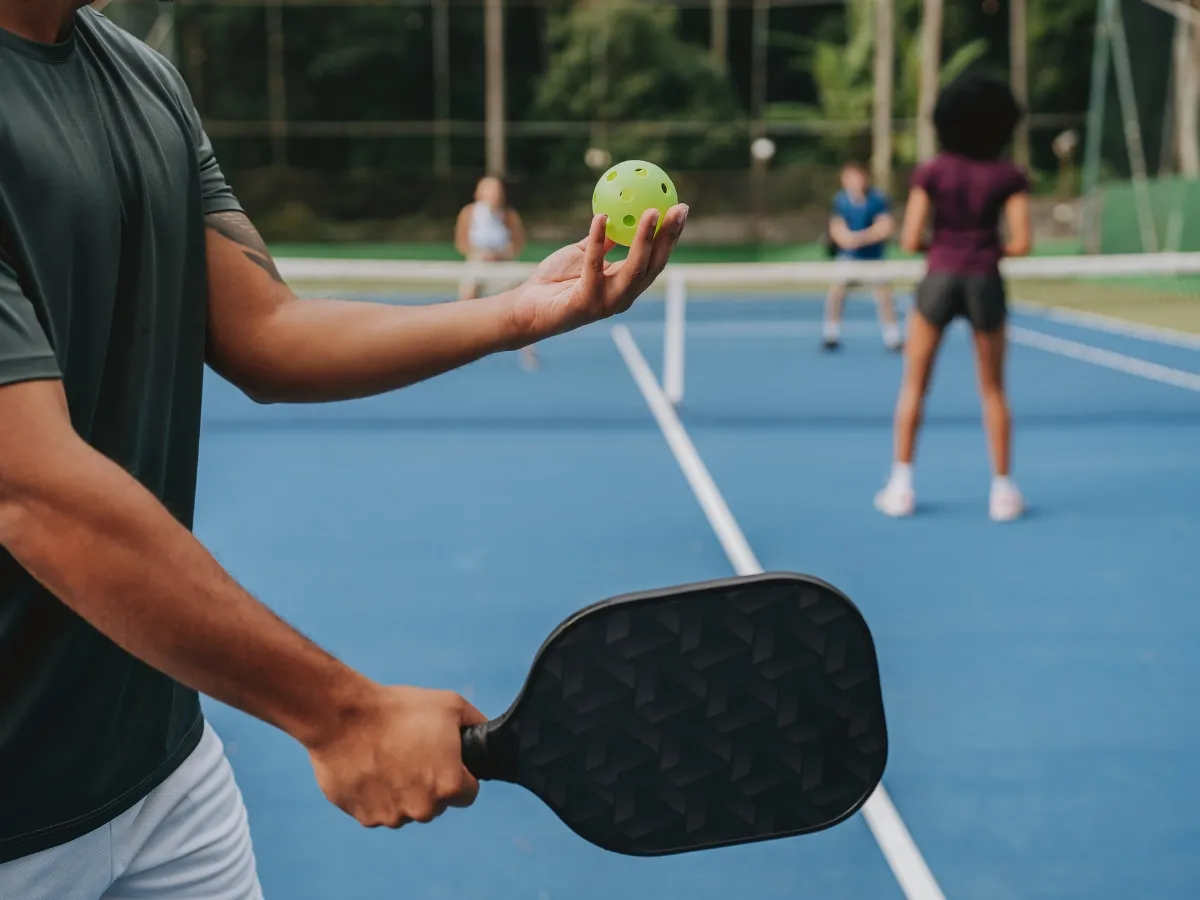
If you are learning how to play pickleball, the score call can feel like a secret code at first. The good news is that a few clear rules cover almost every situation. Doubles uses three numbers to track the point count and who is serving. Singles uses two numbers. Once you know what each number means and when to say it, rallies flow and disputes drop.
What Is the Three-Number Scoring System in Doubles?
In doubles, say the score as “server team’s points, receiver team’s points, server number.” The server number is 1 or 2 and tells everyone which player on the serving team is up. Only the serving team can score. When the serving team wins a rally, add a point, and the same server keeps the ball while partners switch sides. When the serving team loses a rally, the ball goes to that team’s partner if the server number was 1. If the server number was 2, it is a side out, and the other team serves.
There is one special start-of-game rule. The first team to serve begins at 0-0-2, which limits any first-serve advantage. After that opening turn, every side out gives the new serving team two servers, starting at server 1.
A short example helps. Start at 0-0-2. The right-side player serves and wins the rally. The call becomes 1-0-2 and the partners switch sides. If the serving team then makes a fault, it is a side out because that turn began on server 2. The opponents now call 0-1-1, and the right-side player serves.
How Does Singles Scoring Differ from Doubles?
Singles drops the server number and uses two numbers: “server score, receiver score.” You still only score on your own serve. Serve from the right when your score is even and from the left when it is odd. After each point, the server’s score tells you which side to use next. There is no partner rotation to track, which makes singles calls quick to learn.
How Do You Correctly Call the Score Before Each Serve?
Say the score out loud before every serve. In doubles, speak your team’s points first, the other team’s points second, then 1 or 2 for the server. For example, “7-5-1.” In singles, use two numbers, such as “6-8.” Give yourself a brief pause after the call and then serve. That rhythm helps both teams verify position, server order, and the current total, so you do not play from the wrong side.
What Does “Win by 2” Mean in Pickleball Games?
Most games are played to 11 and must be won by 2. If the score reaches 10-10, play continues until one side gains a two-point lead, such as 12-10 or 13-11. Some formats use 15 or 21 for longer games, but the win-by-2 rule still applies. Remember that traditional play uses side-out scoring, so only the serving team can add points. This is why finishing a tight game often comes down to holding your serve and taking care of first-ball contacts.
Quick Tips to Keep Scoring Straight
Keep these habits, and scoring will feel natural. At the start of each game, confirm who serves first and stand in the right court. In doubles, check your team’s score to know where to stand: the player who began on the right should be on the right when your team’s score is even. In singles, let your own score guide your side. If confusion ever pops up, replay the point and reset the correct server and positions before the next ball. With a clear call and steady routines, you will spend less time sorting out numbers and more time playing.
What Are the Standard Pickleball Court Dimensions and Layout?
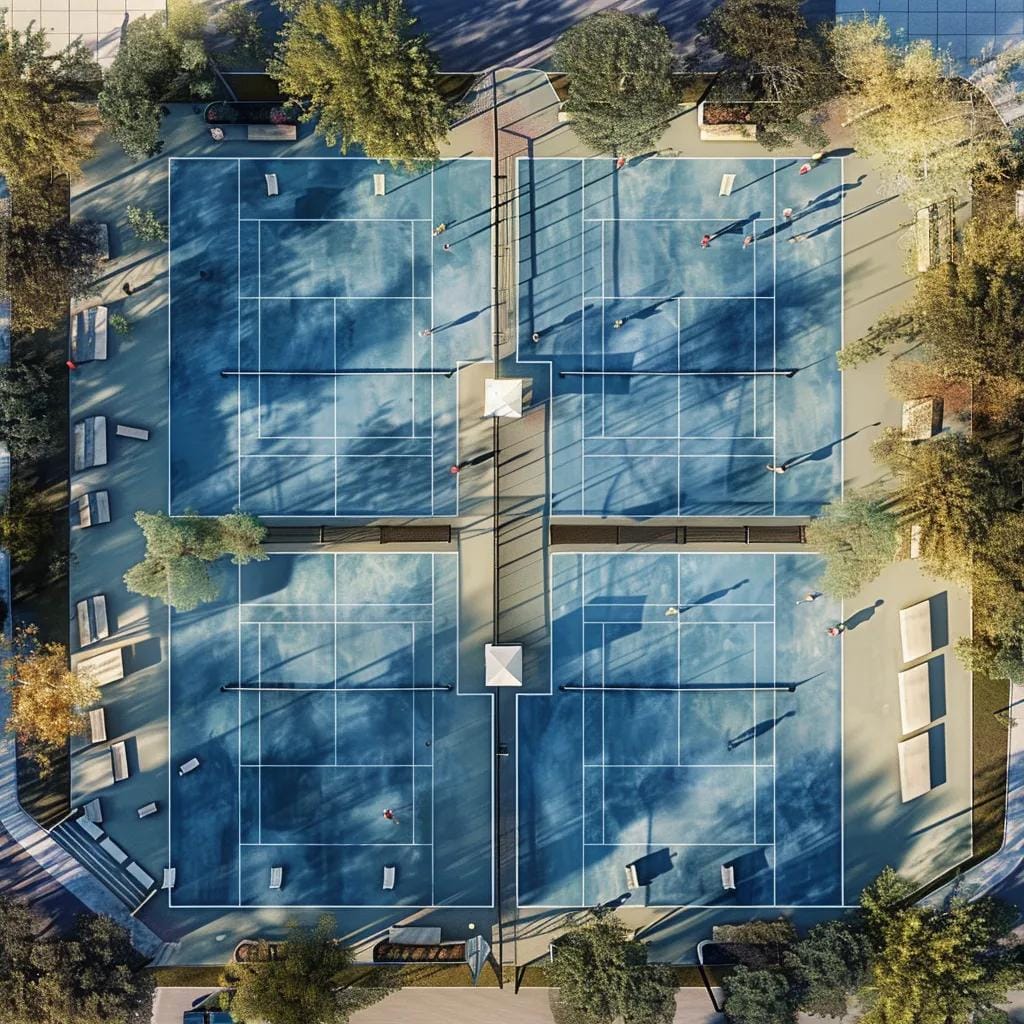
A regulation pickleball court is 20 feet wide and 44 feet long. The same size works for singles and doubles. Lines define the baselines at the back and the sidelines along the edges. A non-volley zone, often called the kitchen, extends 7 feet from the net on each side. On both halves of the court, a centerline splits the area into left and right service courts. This simple layout keeps rallies organized and gives you clear reference points as you learn how to play pickleball with better footwork and positioning.
What Are the Official Court Size and Net Height Measurements?
The net stretches the full 20-foot width and sits a little lower in the middle than at the posts. At the posts, the top of the net is 36 inches high. At center court, it is 34 inches high. Those two numbers matter more than you might think. A drive that clears the middle by an inch can still clip the tape at the posts, and a soft drop shot that just sneaks over the center can force a scramble.
How Is the Court Divided Into Zones and Service Areas?
Each side has two service boxes, left and right, created by the centerline that runs from the baseline toward the net. Serves must travel diagonally into the opposite box and land past the kitchen line to be legal. The non-volley zone itself is a safety and fairness buffer. You can step into it to hit a ball that bounces first, but you cannot volley while any part of you touches the kitchen or its line. The rest of the space from the kitchen line to the baseline is open court, where volleys, groundstrokes, and lobs are all in play.
Can You Convert Tennis or Badminton Courts for Pickleball?
Yes. Many parks and schools paint pickleball lines over existing courts, or they use removable tape or temporary line kits. On a tennis court, portable pickleball nets make setup easy, and some facilities lower the tennis net to match pickleball height when a dedicated net is not available. Badminton courts already share the 20-foot width, so you can mark the new baseline and kitchen lines and roll out a portable net at the proper height. Good markings reduce line-call arguments and help new players understand where to stand for serves and returns.
How Does Understanding Court Zones Improve Your Play?
Knowing the zones turns into smarter decisions on every point. On the serve, stand behind the baseline, pick your diagonal target, and clear the kitchen line. After you return serve, move forward and set your feet just outside the kitchen so you can volley without risking a fault.
When a ball lands in the kitchen on your side, step in to play the dink, then reset your feet behind the line before the next volley. If you are pushed back, defend from the baseline until you can work your way in again. During longer rallies, use the centerline and sidelines as visual cues to aim deep, high-percentage shots that keep your opponent off balance while you look for a shorter ball to attack.
A clear grasp of the court’s size, net height, and zones speeds up learning and keeps play fair. It also shortens the path from basic rallies to confident strategy. With the dimensions set in your mind, you can focus on consistent serves, patient third-shot drops, and clean volleys. That is the foundation of solid, repeatable pickleball and a practical starting point for anyone who wants to master how to play pickleball without getting lost in complicated tactics.
What Equipment Do Beginners Need to Start Playing Pickleball?
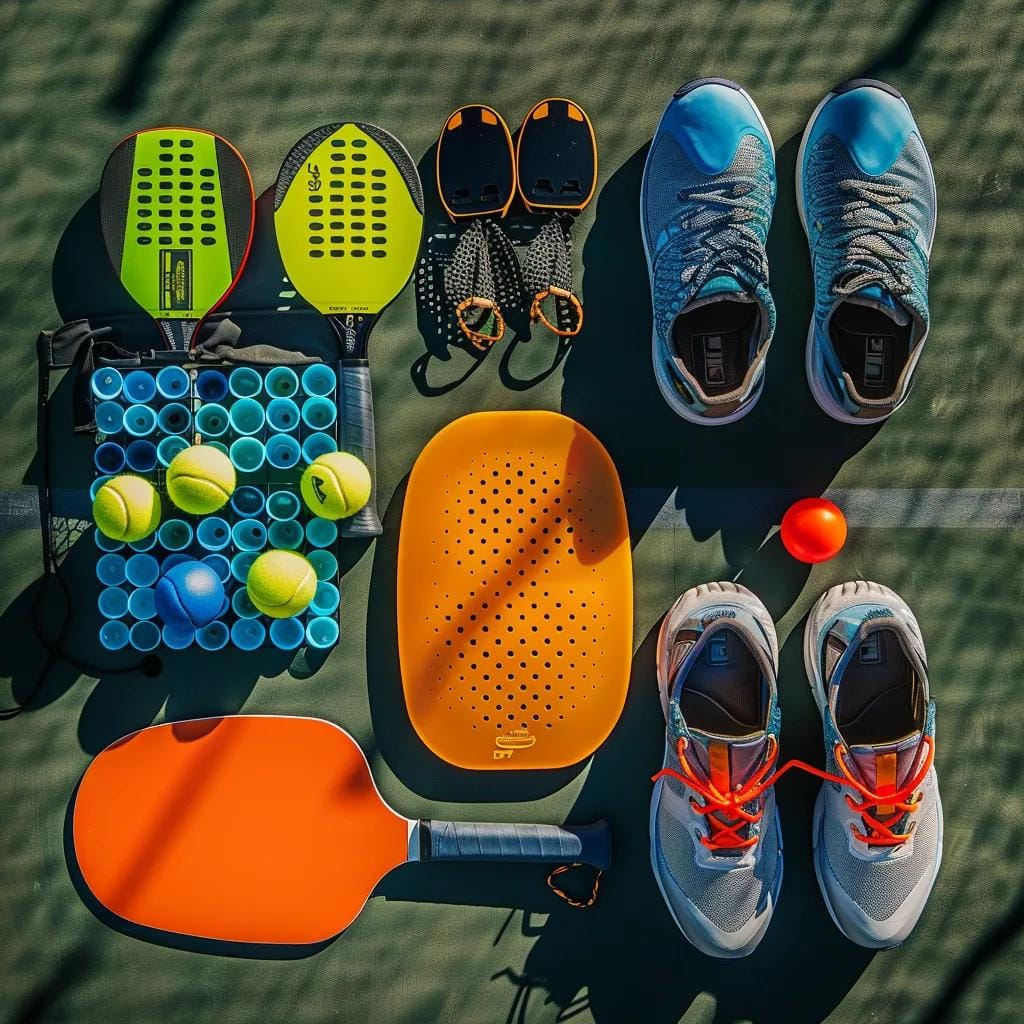
Getting the right gear makes learning how to play pickleball a lot easier. You do not need a huge kit. Start with a dependable paddle, balls that match your court surface, court shoes with real lateral support, breathable clothing, and a simple bag to keep it all together. Good basics help you focus on footwork, timing, and clean contact instead of fighting your equipment.
Which Pickleball Paddles Are Best for Beginners?
Most new players do well with a midweight composite pickleball paddle that uses a polymer honeycomb core. A weight in the 7.5 to 8.5 ounce range strikes a balance between control and power, so your arm does not tire quickly and your soft game develops faster.
Look for a grip circumference around 4¼ to 4½ inches; the right fit lets you hold the paddle without squeezing. A standard, mid-sized shape gives you a forgiving sweet spot and consistent feel. If you already have tennis habits, keep your first paddle simple and stable before trying elongated shapes or edge-to-edge carbon faces.
What Types of Pickleballs Are Suitable for Indoor vs. Outdoor Play?
Indoor and outdoor balls are different on purpose. Indoor balls are a bit softer and use fewer, larger holes, usually 26. They play slower, grab the paddle face well, and sit down on the court for cleaner dinks. Outdoor balls are harder with more, smaller holes, often 40, so they cut the wind and stay true on rougher surfaces.
They travel faster and can feel lively on the paddle. If you practice outside, expect to replace balls more often because cold temperatures and rough courts shorten their life. Keep the colors bright enough to track easily under your local lights.
What Footwear and Apparel Are Recommended for New Players?
Wear court shoes, not running shoes. You need side-to-side support, a stable base, and non-marking soles that grip without sticking. A low or medium stack height helps you change direction without rolling an ankle. Pair them with moisture-wicking socks to reduce hot spots during long sessions. For clothing, choose breathable fabrics that allow a full shoulder turn and easy lunges. A hat and sunglasses help when you play outdoors, and a light layer is useful for cool morning matches.
Are There Useful Accessories and Bags for Pickleball Players?
A basic paddle cover protects the face from scratches in the car or gym. Overgrips are inexpensive and keep the handle tacky as you sweat; swap them out when they feel slick. A compact backpack or shoulder bag with a paddle sleeve, a pocket for balls, and space for a towel and water bottle keeps you organized. Consider a small first-aid pouch with bandages and athletic tape, plus a microfiber cloth to wipe the paddle and your glasses. None of this has to be fancy to work well.
How to Build Your Starter Setup
Put it all together with a midweight composite paddle, one sleeve of indoor balls and one sleeve of outdoor balls, court shoes that fit, breathable layers, and a simple bag. With those pieces sorted, you can spend your time on fundamentals: consistent serves, reliable returns, and soft third-shot drops. The right starter gear supports clean repetition and steady improvement, which is exactly what you want when you are learning how to play pickleball and building confidence point by point.
What Are the Basic Pickleball Shots and Techniques Beginners Should Learn?
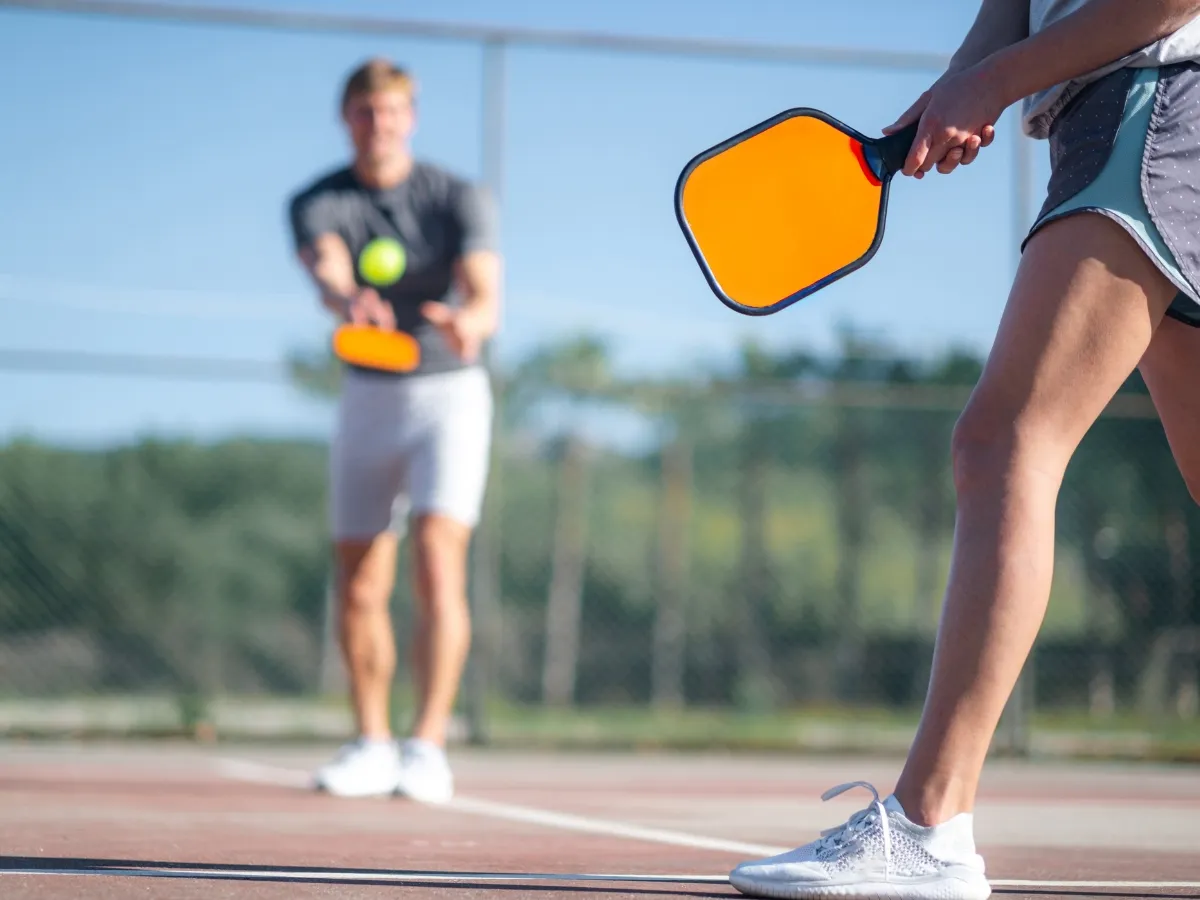
If you are just learning how to play pickleball, start with the few shots that show up in every rally. A reliable underhand serve starts the point. Soft dinks give you control at the kitchen. Firm, clean volleys finish points at the net. Solid forehand and backhand groundstrokes keep you in rallies from the baseline. The third shot drop ties it all together by helping you move forward safely. Build these pieces one at a time, and you will understand not only how to swing, but also when and why to use each option.
How Do You Execute a Proper Underhand Serve?
Stand behind the baseline with both feet set, then swing from low to high so contact stays below your waist. Keep your wrist relaxed and strike through the back of the ball, sending it diagonally into the service box beyond the kitchen line. Aim for a comfortable height over the net and finish your paddle toward the target. A simple routine matters more than power. If your serve lands deep and consistently, you start more points on your terms and avoid giving away free chances.
What Is a Dink Shot and How Do You Use It Effectively?
A dink is a soft shot that clears the net and lands in the kitchen, forcing your opponent to hit up. Use a compact motion with a quiet wrist and a steady paddle face. Shape the ball cross-court when you can, since the longer distance gives you a bigger margin. Mix depth by dropping some dinks short and sending others a bit deeper to move your opponent. The goal is patience. You are waiting for a ball that sits too high, not trying to win with one risky swing.
How Do You Perform a Volley and Groundstroke?
For volleys, meet the ball in front of your body with a firm, quiet block. Keep your paddle face stable and push through the line of the shot rather than taking a big swing. For groundstrokes, let the ball bounce, set your feet, and swing through at waist height with smooth tempo. Stay balanced after contact so you can recover quickly. Switching between these two strokes is the heart of point building: defend deeper balls with groundstrokes, then finish at the net with simple, controlled volleys.
What Is the Third Shot Drop and Why Is It Important?
After a serve and return, the serving team often sits at the baseline while the returners control the net. A third shot drop solves that problem. From the baseline, float the ball high enough to clear the net and land in the kitchen, giving you time to advance. Think soft hands and an open paddle face. If the return is high or short, drive the ball instead and then close in. Choosing between a drop and a drive based on the ball you receive is a key step toward smart, steady play.
How Can Basic Footwork and Positioning Improve Your Game?
Good feet make every stroke easier. Use a small split step as your opponent hits, then take short adjustment steps to line up the ball. In doubles, stay level with your partner so you cover the middle and avoid leaving gaps. When you reach the kitchen, stop with your toes just behind the line and keep your paddle up. From the baseline, recover toward the center after each shot so you can reach both corners. Clean footwork, calm hands, and clear targets turn practice into points.
What Are the Key Pickleball Etiquette Rules for Social and Recreational Play?
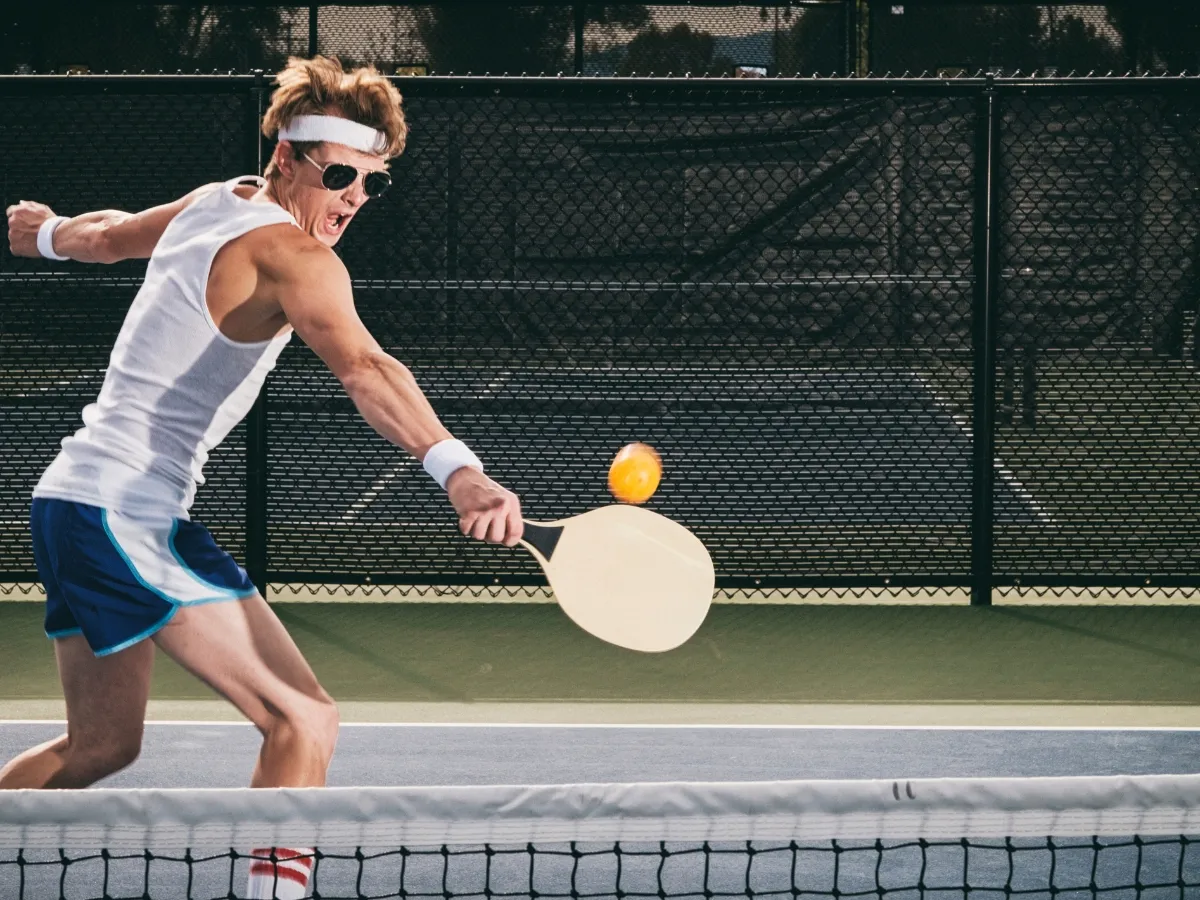
Learning how to play pickleball is only half the story. The other half is etiquette, which keeps games friendly, safe, and fair. In open play, people of different ages and skill levels share courts, so a little courtesy goes a long way. Greet your opponents, confirm the score before the serve, and keep the pace moving between points. If a disagreement pops up, choose the simplest fix and keep the rally going. The goal is a good match and a good time for everyone on the court and waiting to play.
How Should You Call Balls and Respect Opponents on Court?
Call your own side of the court, make decisions immediately, and speak loudly enough for everyone to hear. If you clearly see a ball out, say “out” right away and hold up a finger to show the call. If you are not certain, give the point to your opponent and play on. Compliment clean winners and avoid celebrating opponent errors. When a let occurs or a ball rolls in from another court, stop play at once and replay the point. Return stray balls with a gentle bounce or underhand roll so you do not interrupt someone else’s rally. Respectful communication keeps tension low and rallies fun.
What Are the Unspoken Rules for Rotations and Mixing Skill Levels?
Open play works best with simple rotation. When you arrive, place your paddle in the stack, join the next available game, and step off after one game to 11 so others can play. If the courts are busy, use shorter games to 9 or even 7 to keep things moving. Help newer players feel welcome by pairing them with supportive partners and avoiding lopsided teams. If a court is playing at an advanced pace, let that group continue together, and form a nearby court at a similar level. The aim is competitive but enjoyable games for all, not blowouts or frustration.
How Can You Ensure Safety and Fair Play During Matches?
Safety starts with awareness. Call “ball” the moment something rolls on court and stop play. Give opponents space at the kitchen when you reach for a lob so paddles and bodies do not collide. Avoid swinging above shoulder height in crowded exchanges, and never target someone’s face or body with full power in social play. If you win on a lucky net cord, a quick “sorry” shows sportsmanship. Keep your paddle down when walking behind active courts, and wait for a pause before crossing. Hydrate between games, mind the sun and slick spots, and speak up if you feel play is getting reckless.
Extra Courtesies That Keep Games Friendly
Announce the full score before every serve so all four players are on the same page. Give your opponents time to set before you serve, and do not quick-serve. When coaching new players, ask first and keep it brief. If a call becomes sticky, offer a replay rather than arguing. Keep noise and music at a reasonable level so neighboring courts can focus. At the end of a game, meet at the net, tap paddles, and thank your opponents. Small gestures like these set the tone for the next match and the next group waiting to play.
What Are Common Beginner Mistakes in Pickleball and How Can You Avoid Them?
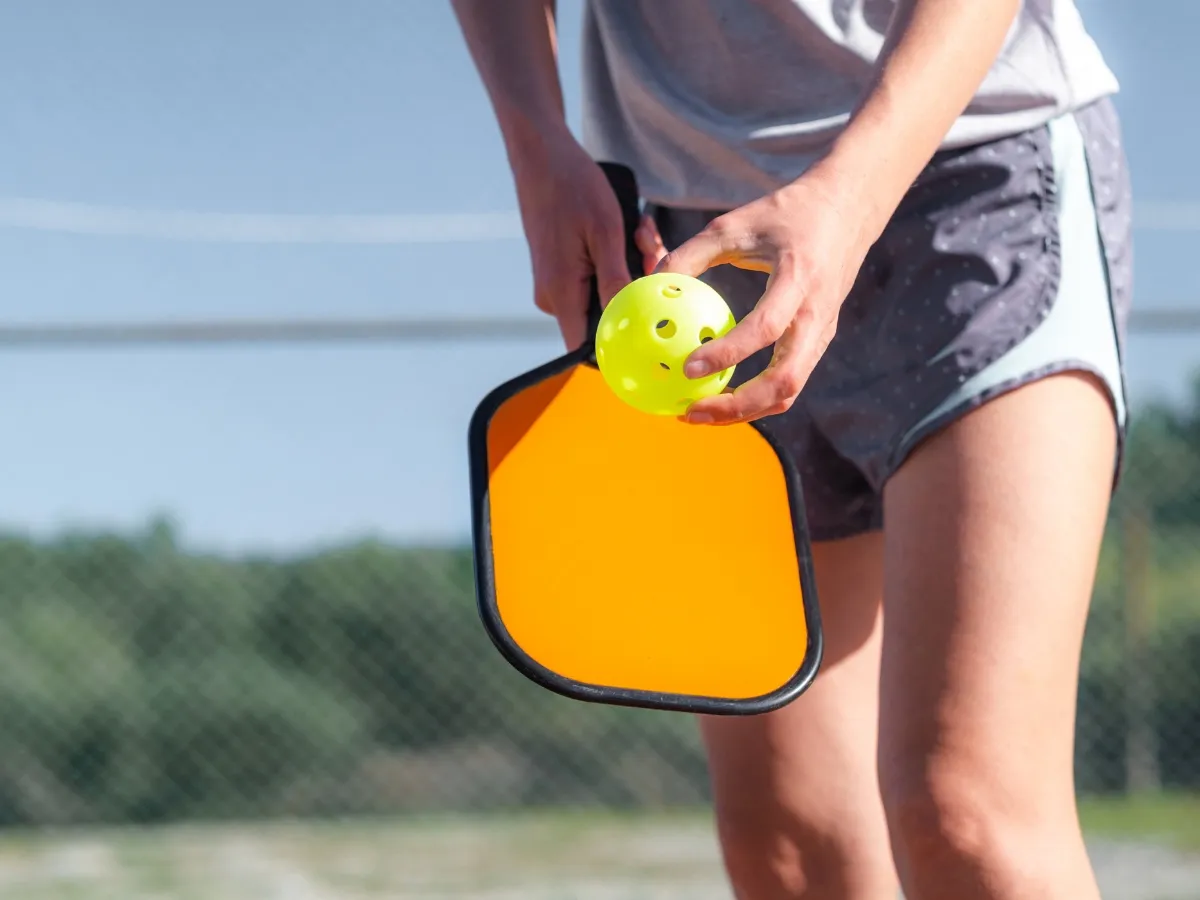
If you are learning how to play pickleball, the first hurdles are usually simple habits that interrupt rallies. Most new players swing too hard, chase every ball to the sideline, or crowd the kitchen line before they are balanced. The fix starts with slowing down. Set a clear contact point in front of your hip, keep your swing compact, and aim for big, safe targets early in rallies. Play more balls down the middle to reduce errors. When you miss, note what happened and adjust on the next point instead of trying a riskier shot.
What Are Typical Faults New Players Make on Serve and Return?
Serving errors often come from rushing. Stand still behind the baseline, breathe, and start the motion with a relaxed toss or drop so the paddle meets the ball below your waist. Contact should rise through the ball, not chop across it. Keep both feet behind the line until contact to avoid foot faults. On returns, many beginners swing flat and long. A better pattern is a steady, shoulder-high swing that sends the ball deep and crosscourt. Depth buys you time to reach the kitchen line with control. Add a small split step as your opponent strikes the next ball, so your feet are ready to move in any direction.
How Can Beginners Improve Consistency and Patience on Court?
Consistency comes from choosing simple shots and repeating them under control. Try building points with height over the net, not pace. Aim a foot inside the sidelines and a paddle-face height above the tape. When rallies speed up, shorten your backswing and meet the ball earlier.
When rallies slow down, soften your grip to keep the ball low and unattackable. Patience grows when you set goals that are within reach. Decide that you will win points by forcing one extra ball, not by blasting a winner. Count clean contacts instead of winners during practice games, and you will notice errors drop in real matches.
What Are Effective Drills to Correct Common Technique Errors?
A wall session is the quickest way to steady your paddle face. Stand a few steps from a solid wall and volley repeatedly without a backswing, keeping the paddle in front of your chest. Focus on a quiet wrist and small adjustments with your feet. For kitchen control, rally with a partner at the non-volley line and trade soft dinks that land inside the kitchen. Add targets near the net strap to learn depth control, then vary height and spin without changing your posture.
To build the third-shot drop, start at mid-court and send gentle arcs that land in the kitchen, then back up a step at a time until you can repeat the same flight from the baseline. Finish a practice block by serving to both boxes and holding your finish for a second to check balance. Balance at the end of the swing is a reliable sign that the rest of the motion was smooth.
Building Solid Habits for Confident Play
Beginner mistakes fade when practice mirrors match play. Warm up with soft hands at the kitchen, serve with a routine you can repeat, and return deep so you and your partner can move together to the line. Expect a few misses while you learn, but keep your targets big and your swing compact. With steady reps and simple tactics, you will play longer rallies, make cleaner decisions, and feel more in control every time you step on court.
What Are the Most Important Pickleball Terms Beginners Should Know?
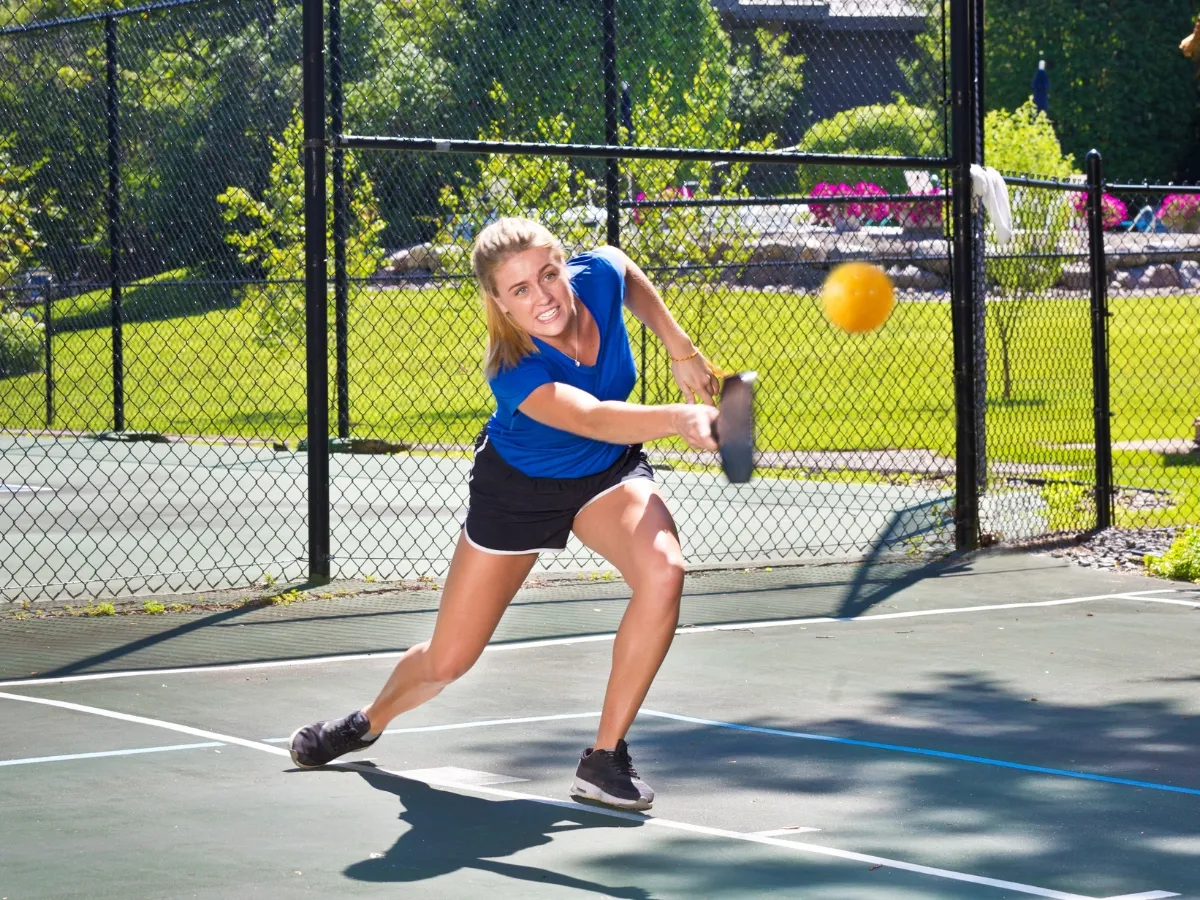
Understanding common terms such as ace, side out, rally, kitchen, fault, and volley streamlines communication and deepens your grasp of game flow.
What Does “Ace,” “Side Out,” and “Rally” Mean in Pickleball?
- Ace – A serve that lands untouched in the correct service box.
- Side Out – Change of server after the serving team loses the rally.
- Rally – The sequence of strokes from serve to point conclusion.
How Do Terms Like “Kitchen,” “Fault,” and “Volley” Affect Gameplay?
- Kitchen – Non-volley zone that shapes net play strategy.
- Fault – Any rule violation ending the rally.
- Volley – Hitting the ball before it bounces to apply pressure.
Where Can Beginners Find a Visual and Interactive Pickleball Glossary?
Several online platforms and video channels offer animated diagrams and clickable glossaries. Exploring these resources reinforces term definitions with visual context. Familiarity with pickleball vocabulary empowers you to learn advanced tactics and connect seamlessly with fellow players.
Conclusion
Now that you’ve learned the basics of pickleball, it’s time to grab a paddle and experience the fun for yourself! Master these basics and you’re ready to rally at Planet Pickle’s indoor facility, join local mixers, and enjoy endless games with family and friends. With clear rules, scoring know-how, equipment advice, technique drills, etiquette tips, and local resources, you have everything to launch your pickleball journey in Atlanta. Call 678-404-5792 today or connect with us to book court time, join a clinic, or discover all the ways we help new players fall in love with America’s fastest-growing sport. Lace up supportive court shoes, pack your paddle, and head to Planet Pickle for your first game—your next rally awaits!

